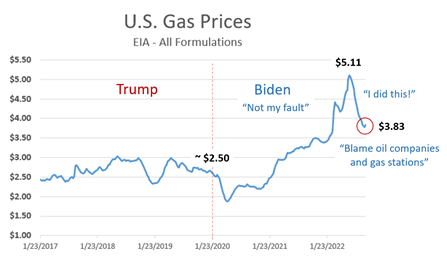Disney says; “Annual passholders are amongst our most special guests”, but…
==============
Let’s flashback: About 20 years ago, Larry Selden & Geoffrey Colvin wrote a best-selling business book titled:
Angel Customers and Demon Customers: Discover Which is Which and Turbo-Charge Your Stock

In a nutshell, the authors argued that:
One of the oldest myths in business is that every customer is a valuable customer.
Many businesses don’t realize that some of their customers are deeply unprofitable, and that simply doing business with them is costing them money.
It’s typical that the top 20 percent of customers are generating almost all of a company’s profit while the bottom 20 percent are actually destroying (stock) value.
Their prescription: Manage businesses as a customer portfolio.
- Determine which customers are profitable (angels) and which are not (demons)
- Cater to the most profitable customers — new & old — who buy more and pay more.
- For the low profit customers, raise your prices — from free to something … and from something to something higher.
- If customers are unprofitable after repricing, fire them
Sound reasonable doesn’t it?
Some companies (e.g. Best Buy) bought in to the concept.
See: Best Buy Decides Not All Are Welcome
How did that work out for Best Buy?
Well, just glance at the below chart showing Best Buy’s stock price.
Yeah, I know that correlation isn’t necessarily causation and that other things were going on (e.g. a financial crisis and a deterioration of BB’s in-store service. Nonetheless, I think the relationship is both likely and instructive.

==============
OK,now let’s fast forward to today…

What’s Disney’s new magic formula?
According to the WSJ: “Wringing every last dollar out of each visitor.”
Said more elegantly, “in a major strategic shift, the company is focused less on maximizing the quantity of visitors and more on increasing how much money each visitor spends, an approach the company refers to as yield management.”
First, Disney has raised prices pretty much across the board for park tickets & merchandise), and eliminated or started charging for other services (e.g. parking for some annual passholders) and features that used to be free (e.g. the Magic Bus from the airport).
Second, Disney is, in essence, branding its customers Angels or Demons.
Who are the Demons?
Annual pass holders (think: local residents).
Why?
Annual passholders tend to spend less than other visitors per visit.
A typical annual pass holder might ride only one ride during a visit, eat an ice cream cone and walk around for a few hours.
They take up capacity that might otherwise be used by out-of-state visitors (the Angels) who stay all day, eat multiple times in the restaurants, stayin the Disney hotels, and buy more merchandise.
Among the actions that Disney has taken:
- Stopped selling new annual passes
- Raised renewal prices for current annual pass holders
- Blacked out more days when annual passholders aren’t welcome
Annual passholders are some of the Disney’s most loyal and ardent fans, and many are not happy.
Disney’s CEO shrugs off the tension caused by rising prices and other changes, especially for annual passholders as “the inevitable result of progress” and notes that “demand has not abated.”
==============
My take:
Disney execs may have read the 2003 book but, apparently, didn’t do more recent research on Angel & Demon zealots (e.g. Best Buy).
I’m all for raising prices when you can but, in my days as a marketer, I never found hacking off your brand loyalists to be an effective strategy.
I think Disney is forgetting that annua; passholders are the brand’s most effective marketing vehicles … proselytizing Disney virtues to friends and family … often inviting them to go to the park with them (at full price, of course).
When the loyalists go silent (or negative), short term results may spike, but are likely to turn around as quickly as Best Buy’s did.
SHARE THIS POST WITH FRIENDS & FAMILY










